After a mediocre 1-1 draw against Switzerland, could England get back on the right track back in a familiar role as the "Auld Enemy" against Scotland? Terry Venables' 4-4-1-1 from the Switzerland game gave way to something a little different. With full backs Gary Neville and Stuart Pearce flanking Tony Adams in a back three, Gareth Southgate stepped into midfield alongside Paul Ince, with Paul Gascoigne tasked with being a central creative outlet. Teddy Sheringham continued working off Alan Shearer up front, while Darren Anderton and Steve McManaman rotated frequently between the wings. As such the first half pass networks appear congested; but this is merely a reflection of the positional flexibility the England team played with: 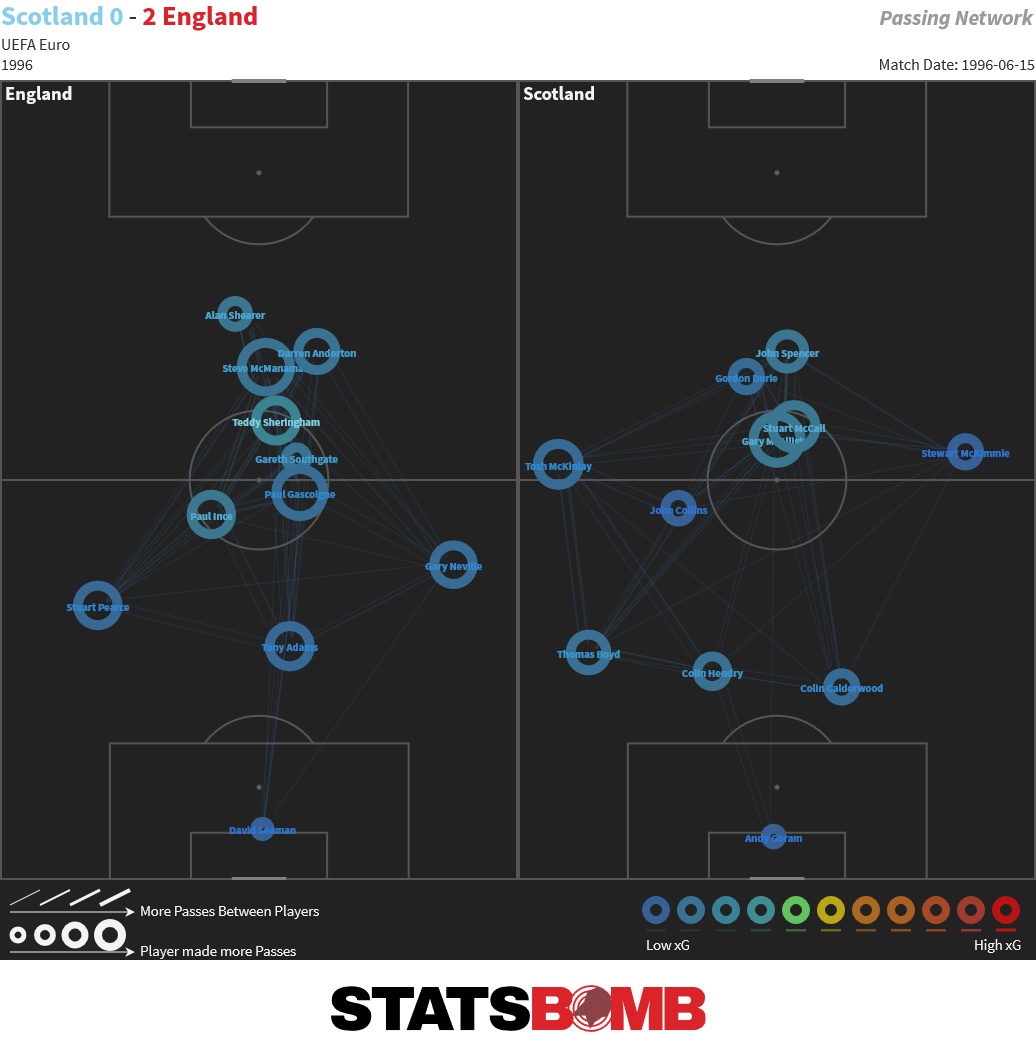
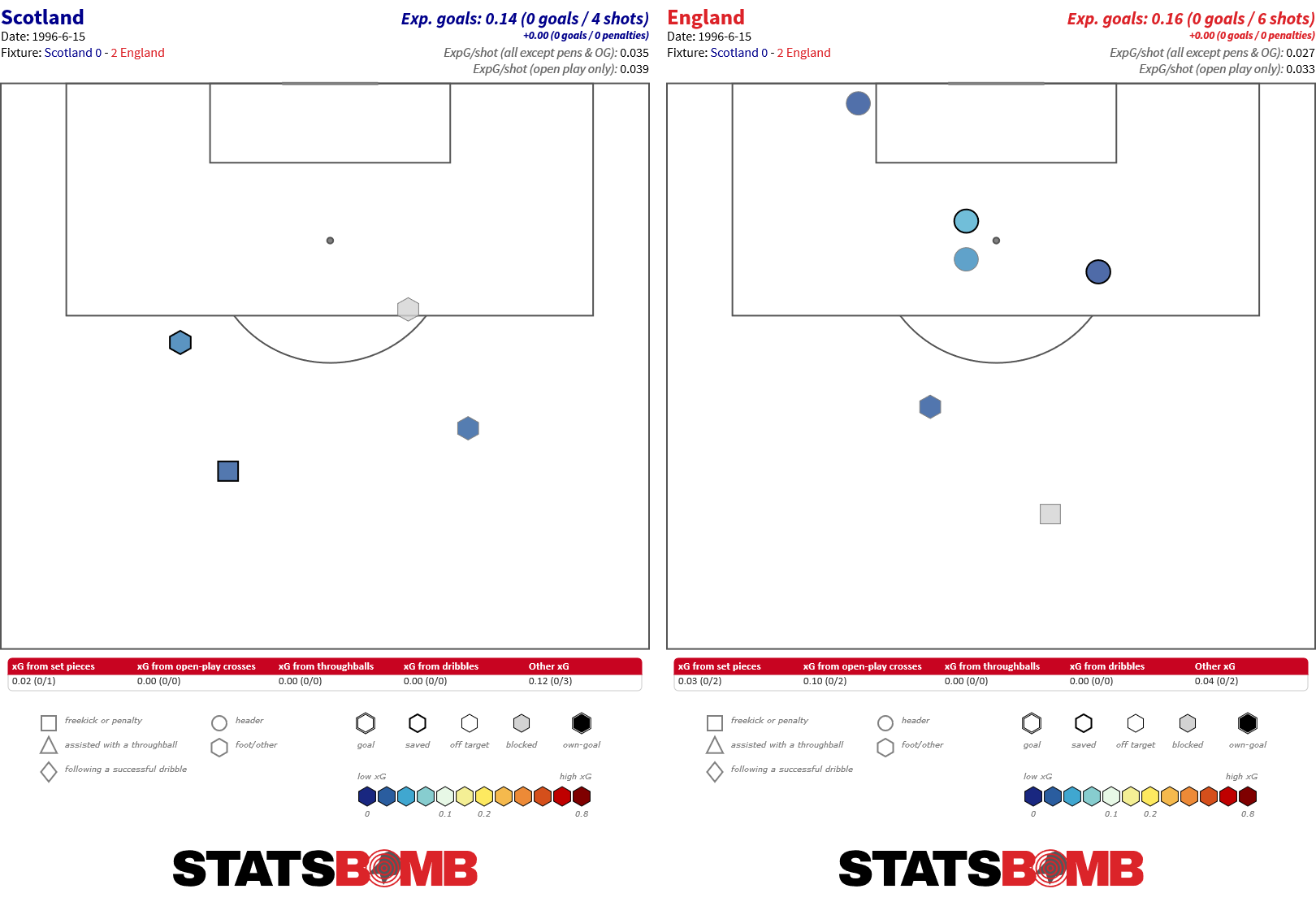 England made a key change at half-time, Jamie Redknapp came on for Stuart Pearce. This meant Southgate could move back to his more usual position in the back line, and Redknapp's passing range could allow England a little more control in the middle of the park. The opening minutes of the second half saw England come to the fore, Sheringham missed an open header deep inside the box and 2 minutes later they were rewarded when Shearer opened the scoring with a far post header from Neville's cross. However, it was Steve McManaman who set the tempo here, moments before freeing Neville to make that cross he'd advanced from halfway before whistling a left foot shot past the post. Indeed, McManaman's ball carrying was a notable plus again in this game, and he saw more of the ball (48 passes, 22 in the final third) than anyone else on the pitch with good retention (86% completion) for a wide player. Here we see how he carried the ball effectively, a series of long runs deep into Scotland's half.
England made a key change at half-time, Jamie Redknapp came on for Stuart Pearce. This meant Southgate could move back to his more usual position in the back line, and Redknapp's passing range could allow England a little more control in the middle of the park. The opening minutes of the second half saw England come to the fore, Sheringham missed an open header deep inside the box and 2 minutes later they were rewarded when Shearer opened the scoring with a far post header from Neville's cross. However, it was Steve McManaman who set the tempo here, moments before freeing Neville to make that cross he'd advanced from halfway before whistling a left foot shot past the post. Indeed, McManaman's ball carrying was a notable plus again in this game, and he saw more of the ball (48 passes, 22 in the final third) than anyone else on the pitch with good retention (86% completion) for a wide player. Here we see how he carried the ball effectively, a series of long runs deep into Scotland's half. 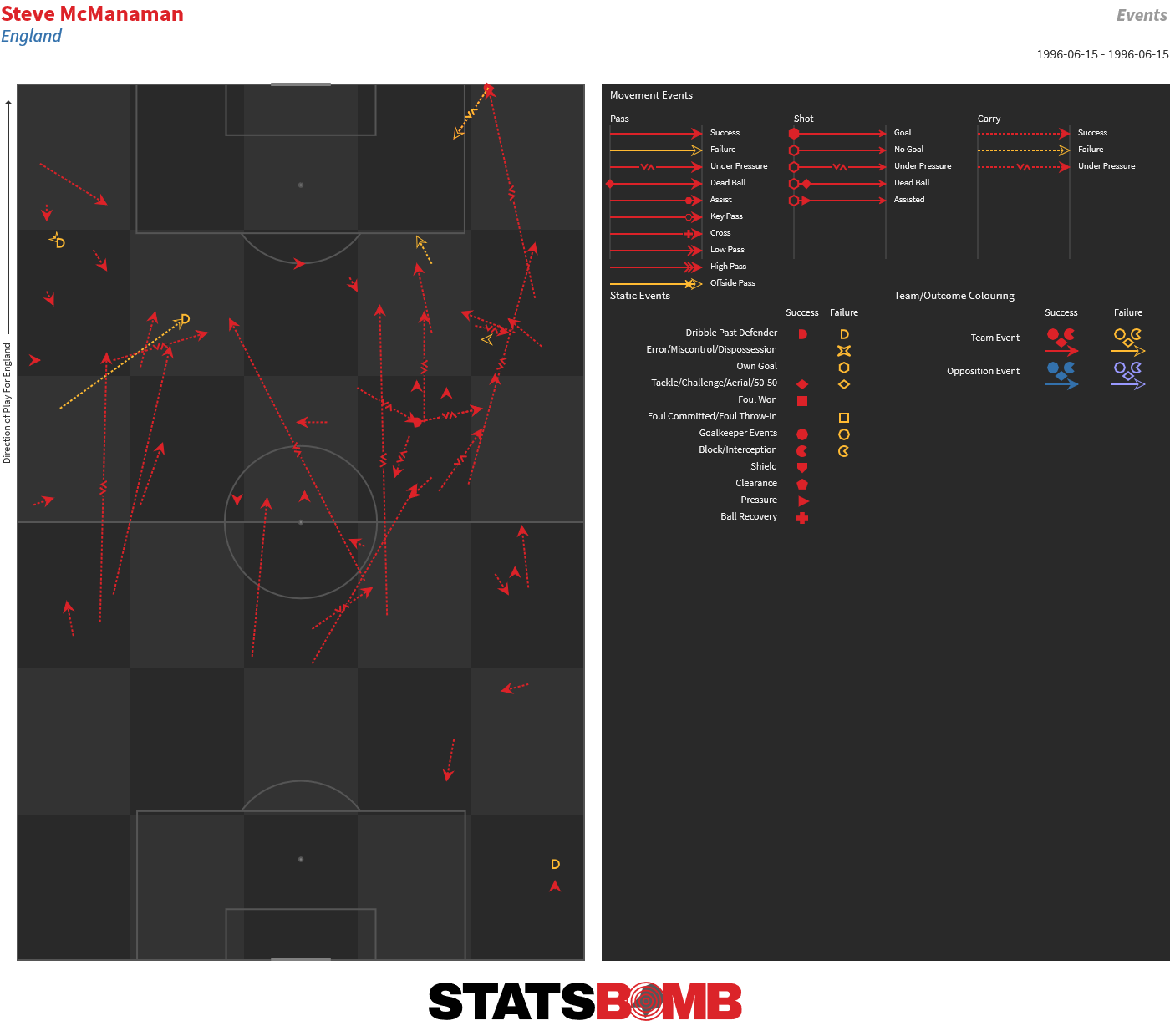
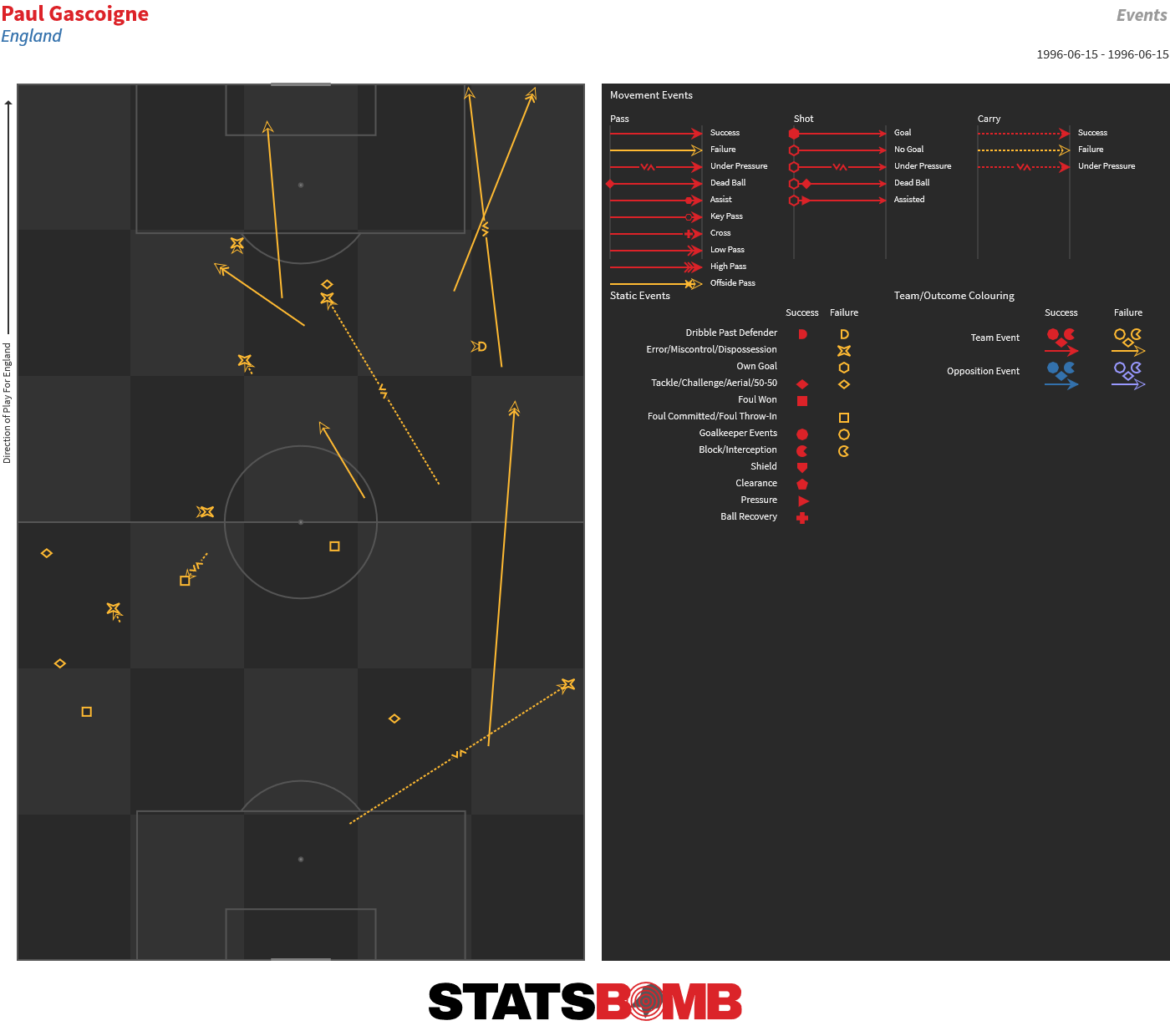
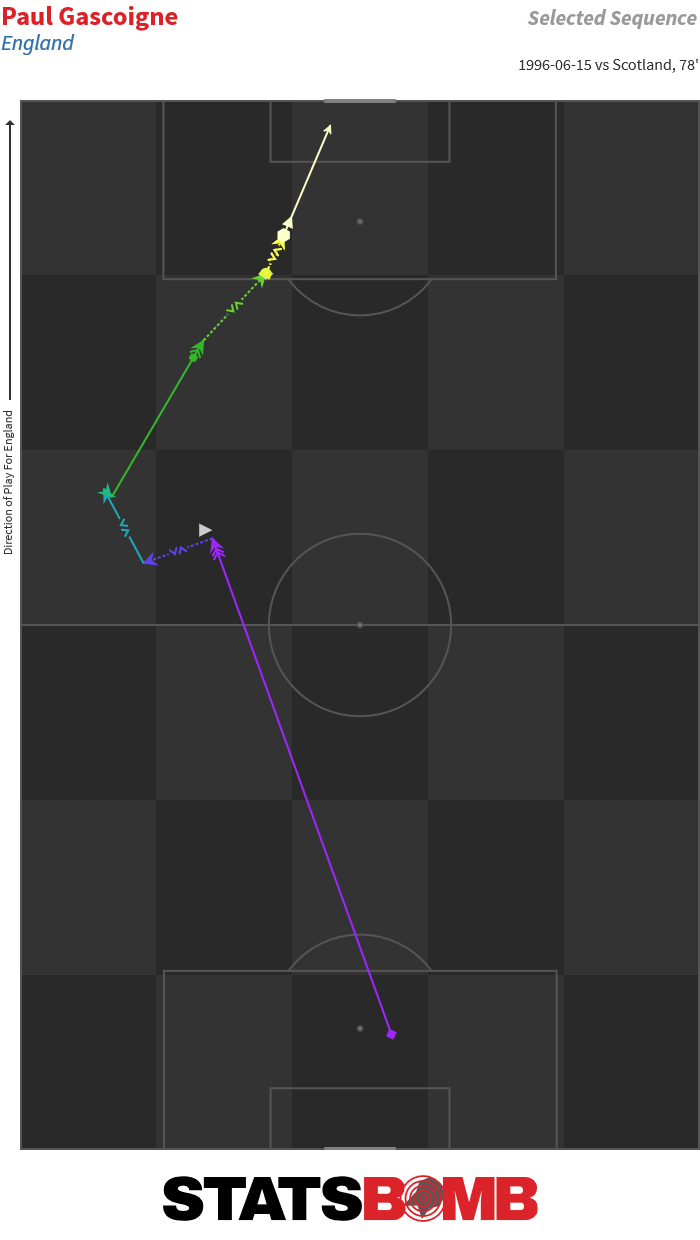 By the end of the game, England were good for their win. The penalty had been Scotland's only good quality chance in the game and England's shot count and expected goals were superior:
By the end of the game, England were good for their win. The penalty had been Scotland's only good quality chance in the game and England's shot count and expected goals were superior: 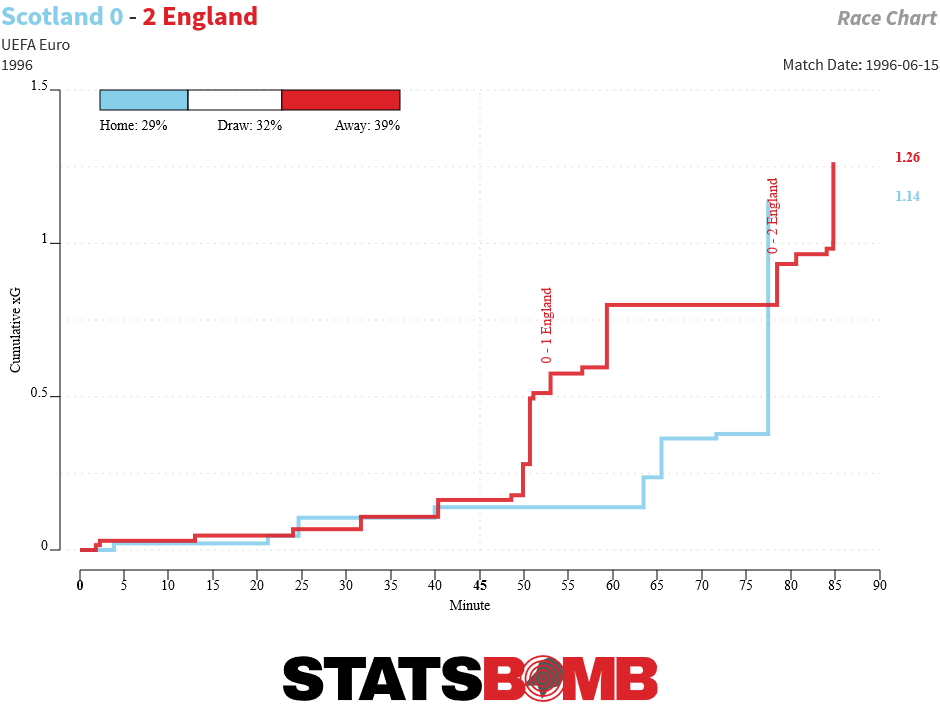
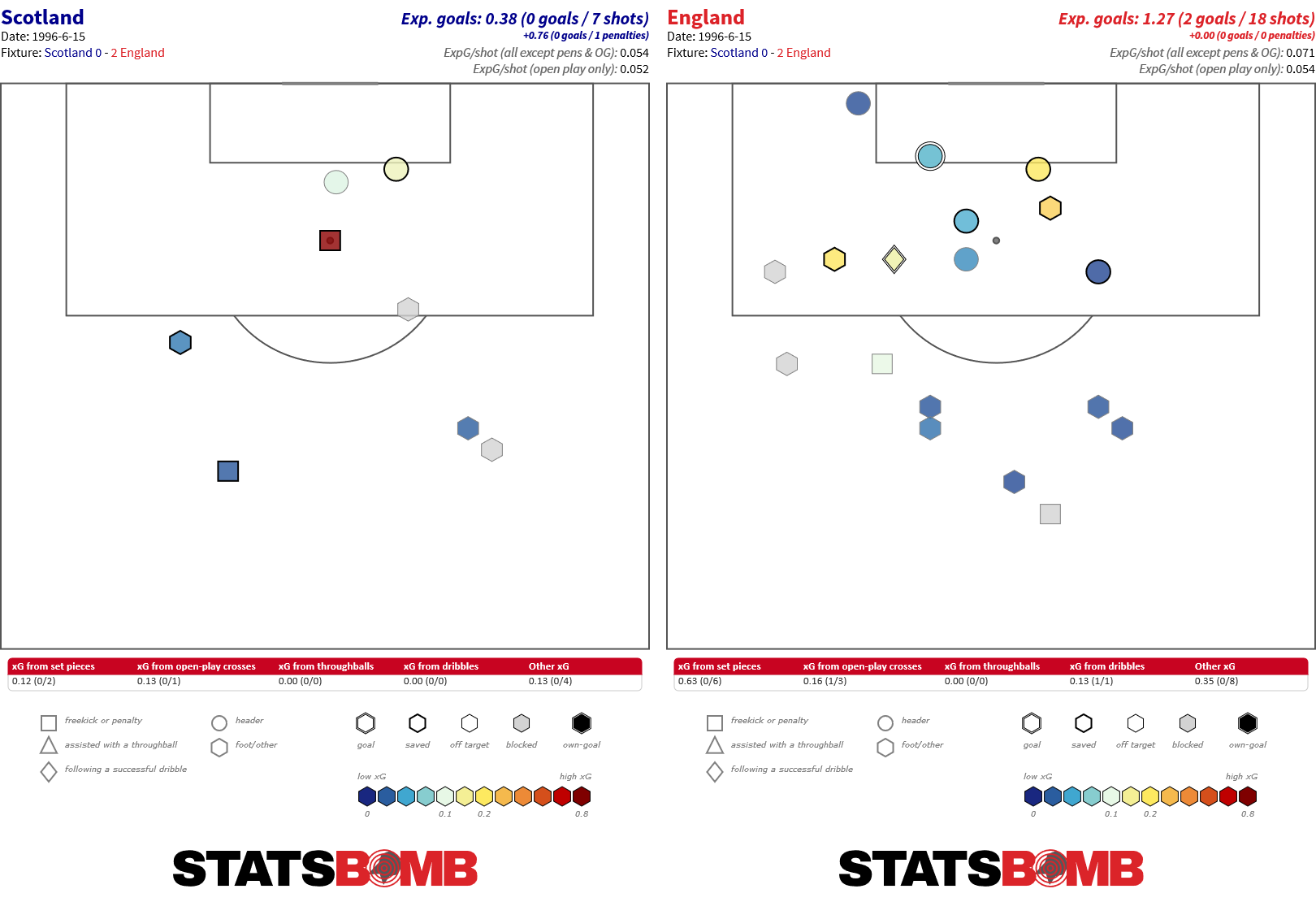 The change of personnel at half time appeared to be effective and the second half shape of the teams was more forward inclined for England than in the first half, Gascoigne especially found himself higher up the pitch and with Southgate back in the back line, the three central midfielders occupied distinct roles, while the wingers remained in more fixed roles with Anderton left and McManaman right. Scotland struggled to get real width high up the pitch:
The change of personnel at half time appeared to be effective and the second half shape of the teams was more forward inclined for England than in the first half, Gascoigne especially found himself higher up the pitch and with Southgate back in the back line, the three central midfielders occupied distinct roles, while the wingers remained in more fixed roles with Anderton left and McManaman right. Scotland struggled to get real width high up the pitch: 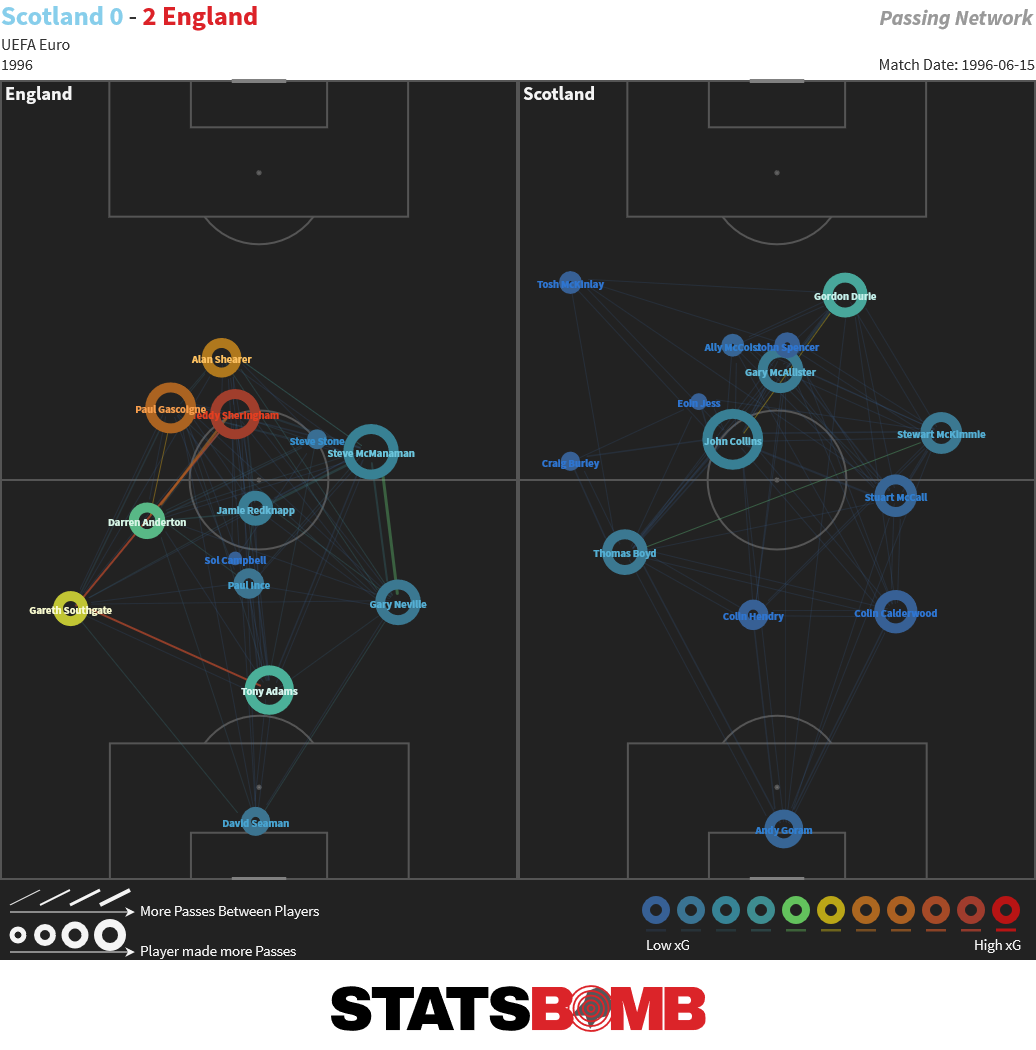
If you enjoyed this look at Euro 1996 through a modern lens and want to learn more about how data can evaluate and describe football, you may enjoy our Introduction to Analytics course. Suitable for everyone from interested amateur right up to football professionals, it gives an accessible, fun and informative route into the world of data and football. Sign up here!
